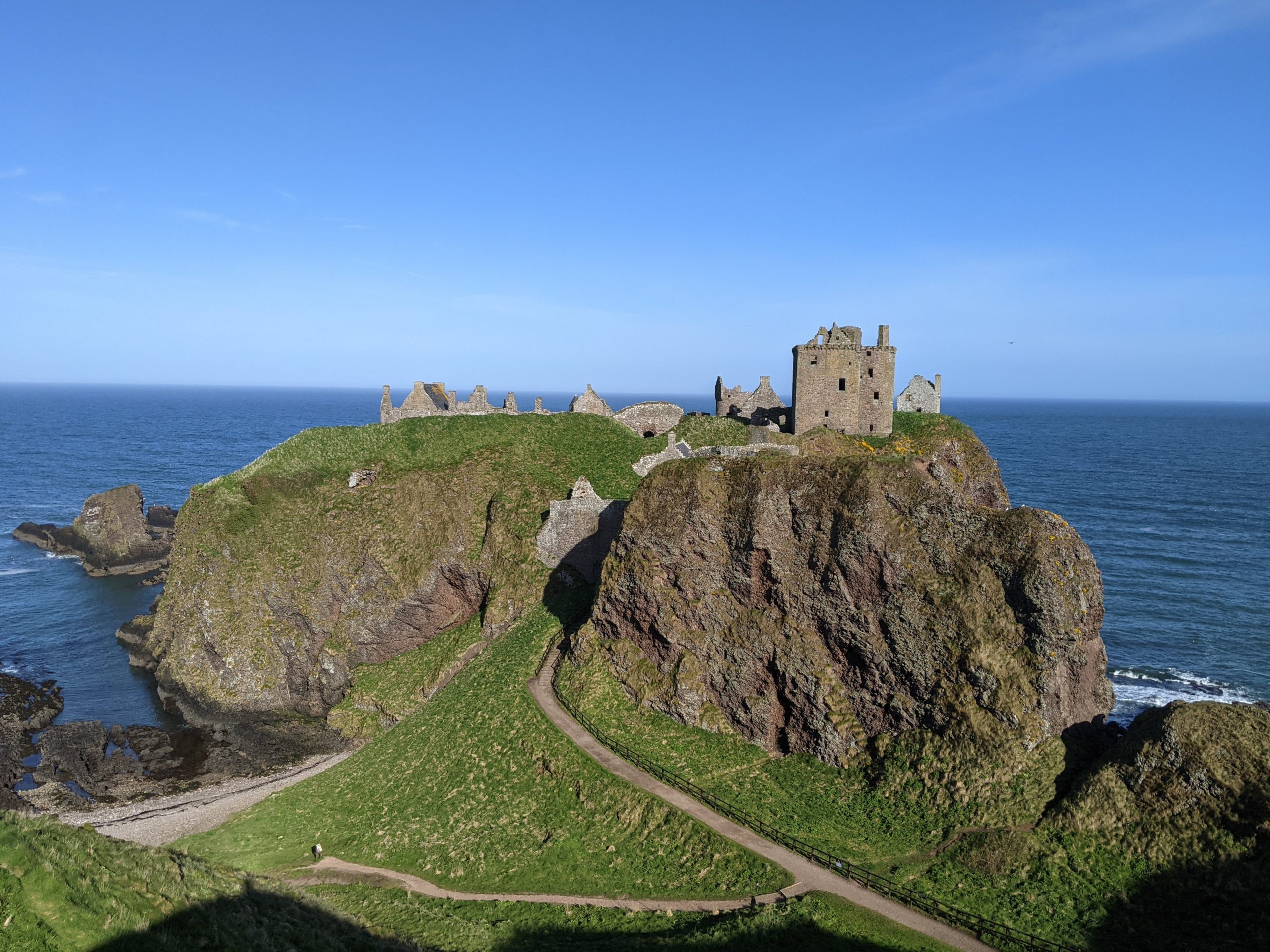By: David C. Weinczok
Twelve years after my arrival in Scotland from Canada, I have more than made up for the lack of true castles in the country of my birth. To date, my Scottish castle count stands at 443, almost all of which I have reached by foot, bicycle, and public transport. To answer the two very reasonable questions that spring to mind upon reading that number: yes, that’s an awful lot of castles (being a touch obsessive does help), and no, they don’t all start blending together. Each castle carries a distinct history and character, though I concede that some leave a more lasting mark than others. There are many reasons why people still visit these ruins of the past – a fascination with history, a sense of awe, an ancient family connection, or just a way to entertain the kids or grandkids. Each is valid, with no shortage of possibilities.
With so many castle experiences behind me, my list of favourites changes every time I try to compile one. It’s worth declaring my biases first. Perhaps thanks to seeing brooding ruins in films such as The Lord of the Rings during my childhood, I have a strong preference for ruinous castles rather than fully intact and still inhabited ones. I also rule out anything built much later than 1600 AD, as the social structures which made castles a possibility and necessity were by then heavily eroded and making way for the Early Modern era. Grandiose non-defensible country houses with dozens of rooms filled with gold-framed portraits and fancy furniture hold little appeal to me. If said ruin is on the coast, even better – the juxtaposition of a crumbling tower and a body of water sates my inner Romantic. With all that said, the following five castles are ones which I love for very different reasons and want to share with as many fellow castle aficionados as possible.
Kisimul Castle, Barra
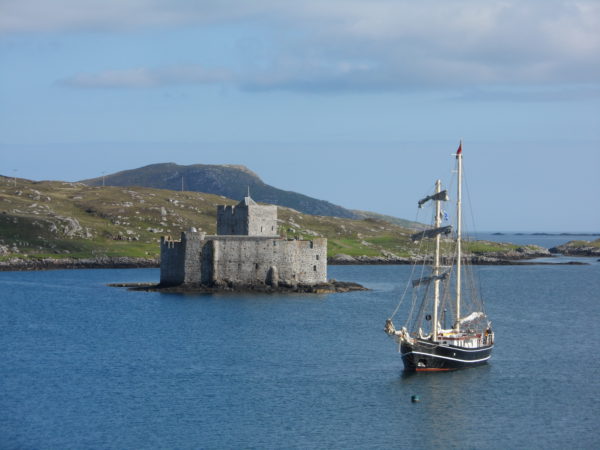
Sometimes it really is the journey that makes a place. Five hours into the ferry sailing from Oban to Castlebay, having passed through a gauntlet of Highland shores lined with crumbling castles and crossed the open sea, Kisimul Castle at last comes into view. With waves lapping directly against its walls, Kisimul is the embodiment of a ‘galley castle’ – a type of castle found throughout coastal Scotland, but especially in the west and north, whose power is inextricable from seaways and the ships that sail them. Indeed, the Hebrides are too often referred to today as ‘remote’, when for most of their history they formed an ‘aquapelago’ with rich seaborne connections between and beyond the island chain.
Kisimul was, and still is, home to the MacNeils of Barra, a family synonymous with Barra itself. The medieval MacNeils made their reputation as marauders and pirates, and Kisimul Castle has seen everything from sieges to kidnappings. Many MacNeil descendants now reside in my home Canadian province of Nova Scotia, where the surname is common. The castle fell into ruin after a fire in 1795 and further degraded during the depredations of Barra’s absentee landlord, Colonel Gordon of Cluny, in the 1830s, being used as a herring curing station and stripped of much of its masonry for ballast. It was restored by Robert Lister MacNeil and gifted to the nation in 2003, for the annual rent of £1 and a bottle of Talisker whisky.
Dunnottar Castle, Aberdeenshire
Scotland is spoiled by way of incredibly impressive castles, but none of them can quite compete with the ‘wow factor’ of Dunnottar, near Stonehaven. Built atop a promontory lined on all sides by steep cliffs, it would not be at all out of place in an epic fantasy film. In fact, it was one of the major inspirations for DunBroch Castle in the Disney/Pixar film Brave, and was shortlisted in 2013 to be named as the 8th Wonder of the World. There was a fort here long before the stone castle was built. In the Pictish period it was known as Dùn Fhoithear, ‘the fort on the shelving slope’. It has seen major action in every period of its history. A siege by an Orcadian fleet is recorded here in 681 AD, and in 934 AD Athelstan of Wessex laid siege as Constantine II of Scotland defended it.
In 1296 the castle submitted to Edward I of England, but William Wallace retook it the next year and allegedly burned the garrison alive within one of the thatched buildings. Montrose attacked in unsuccessfully during his campaigning in 1645, and in 1651 Cromwell’s soldiers bombarded it with cannon in an attempt to capture the Honours of Scotland held within. The Honours were secreted away by beyond enemy lines, and did not emerge again until Walter Scott rediscovered them in a sealed chamber within Edinburgh Castle in 1818. Though the castle complex itself is fairly standard with its towerhouse and stone outbuildings, the power of Dunnottar’s location elevates it into the stuff of legends.
Duffus Castle, Moray
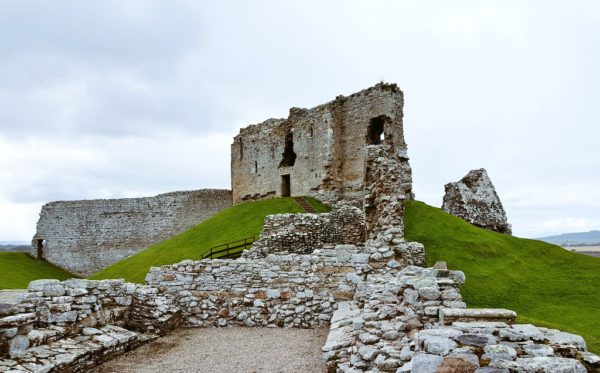
There’s just something immensely satisfying about motte-and-bailey castles. I’m not sure if it’s their typically circular form, a shape long associated with aesthetic perfection, or the way they rise artificially yet congruously from their landscapes. Whatever the precise nature of their appeal, Duffus Castle near Elgin is the best example of its kind in Scotland. Duffus’ history speaks to two crucial stages in Scottish castle history: the ‘upgrading’ of many timber castles into stone ones in the 13th and early 14th centuries, and the arrival of powerful Norman, Flemish, and other Northern European knights in the late 11th and early 12th centuries.
The first castle here was a timber one begun by Freskin, a Flemish mercenary, and completed by his son, William, who took the surname ‘de Moravia’, which eventually became ‘Moray’ (modernised into ‘Murray’). The later stone keep is only partially intact, with several fragments slipping down the earthen slope and giving the appearance of some great, destructive act – though the ravages are of time rather than of any siege engine. The broad top of the stone-lined bailey feels a bit like an overgrown amphitheatre, focusing the roar of jets overhead from the nearby RAF Lossiemouth airfield. One can only wonder what Freskin would make of these ‘dragons’ circling his castle!
Craigmillar Castle, Edinburgh
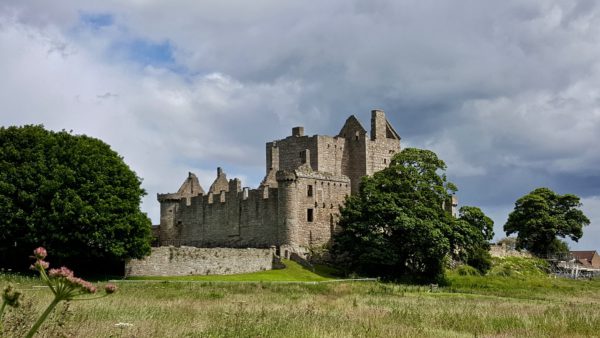
I have now visited Craigmillar Castle at least twenty times, and I would not hesitate to visit twenty more. The reason? It is simply so much fun to explore! With neuks and crannies galore, two layers of curtain walls surrounding a central tower, astonishing views across Edinburgh and the Lothians, and enough architectural features to occupy even the most expert eye for days, it’s the kind of place where you always discover something new with each return. It doesn’t hurt that Craigmillar is one of the best-preserved medieval castle ruins in all Scotland, with a roof still over its great hall.
It dates from at least the mid-14th century, and was a favourite escape for Mary, Queen of Scots from the toxic mix of medieval Edinburgh’s unsanitary streets and political machinations. Not that such machinations entirely eluded Craigmillar – the ‘Craigmillar Bond’, which set out to assassinate her husband, Henry Stuart, Lord Darnley, was formed here. Mary’s involvement in the Bond remains open for debate. In recent years Craigmillar has joined Doune Castle as a well-known star of the big and silver screens, having been used as a filming location for the likes of Outlander and Outlaw King. It’s also dog-friendly, amazing for kids (and adults who want to unleash their inner child with foam swords on the ramparts), and endlessly entertaining to wander through.
Monimail Tower, Fife
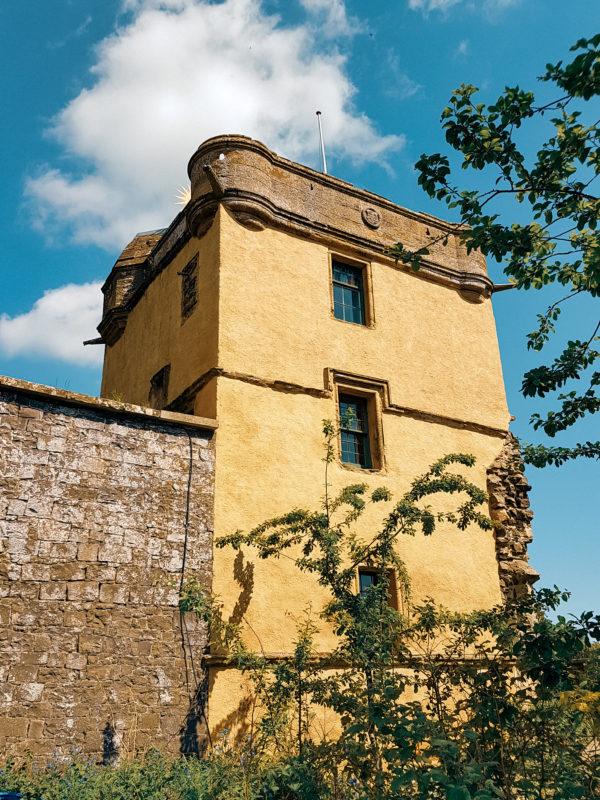
By far the least well-known castle on this list, Monimail Tower near Cupar, Fife, is the castle a hobbit would build if they ever had the inclination. Part of its petite charm lay in the fact that it is the only surviving fragment of the much larger Palace of Monimail, a country residence of the Archbishops of St Andrews. All that is left of this grand palace is a corner tower, surrounded by a volunteer-run community garden.
The vibe of Monimail Tower is somewhere between Hobbiton and Woodstock. A sign made from fragments of multi-coloured tiles welcomes all visitors. Its hall, always left open, is stuffed with binders, information panels, and interactive activities. Artists’ brushes, only recently set down, lay about in the tower’s dedicated arts room. Even the cheerful yellow colour of the tower itself exudes warmth and happiness. This very distinctive and warm atmosphere is thanks to the Monimail Tower Project who run activities on-site, from apple juicing and scything workshops to mini-concerts in the garden. Many castles can feel stripped of the human element that once made them what they were, and are firmly part of the past. Not so with Monimail, where people continue to reinterpret and reinvigorate it as a place for people present and future to enjoy.
Do you have a favourite Scottish Castle? Share your story with us by email, post, or online at: www.scottishbanner.com.
Main photo: Dunnottar Castle.

